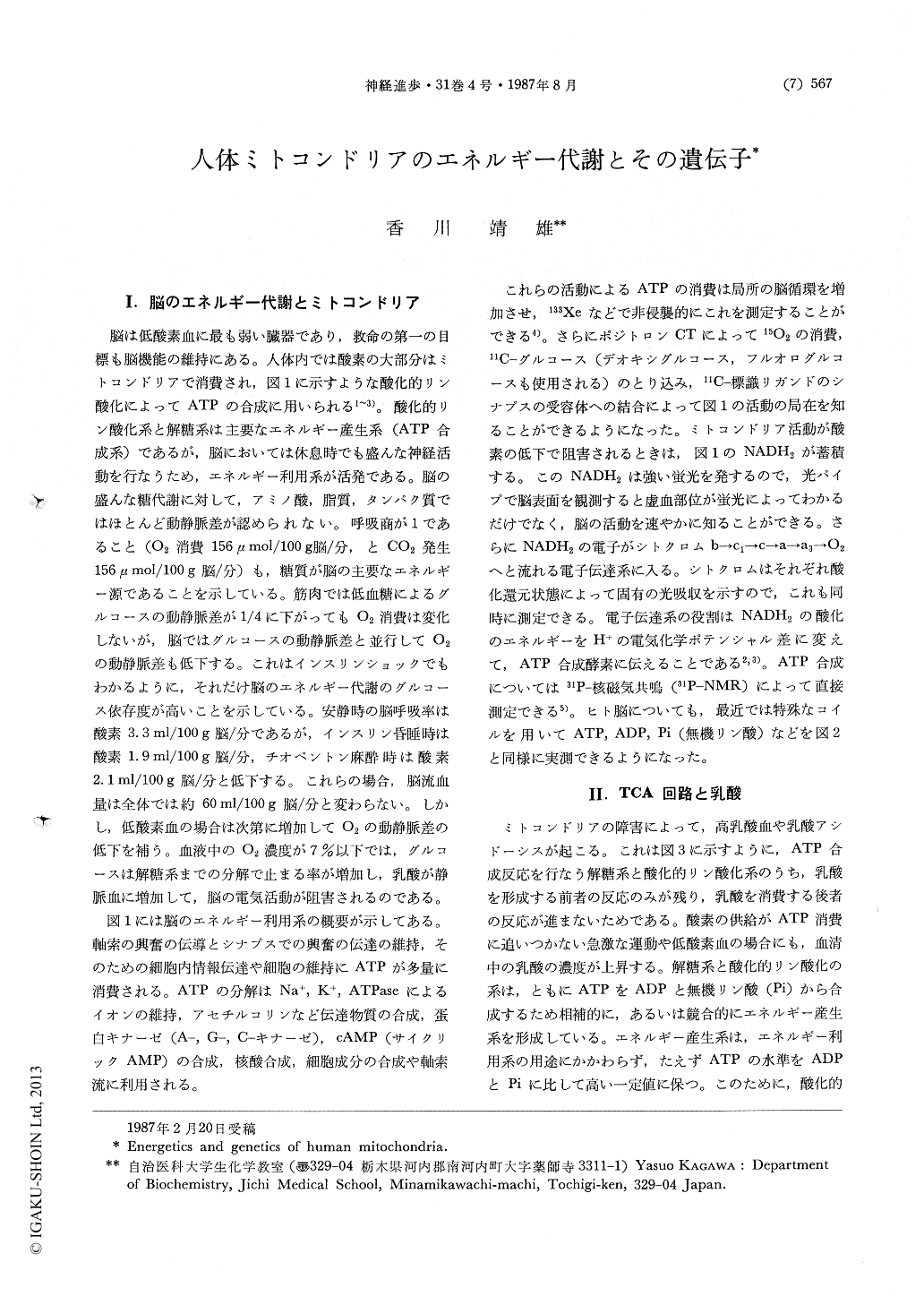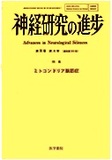Japanese
English
- 有料閲覧
- Abstract 文献概要
- 1ページ目 Look Inside
I.脳のエネルギー代謝とミトコンドリア
脳は低酸素血に最も弱い臓器であり,救命の第一の目標も脳機能の維持にある。人体内では酸素の大部分はミトコンドリアで消費され,図1に示すような酸化的リン酸化によってATPの合成に用いられる1〜3)。酸化的リン酸化系と解糖系は主要なエネルギー産生系(ATP合成系)であるが,脳においては休息時でも盛んな神経活動を行なうため,エネルギー利用系が活発である。脳の盛んな糖代謝に対して,アミノ酸,脂質,タンパク質ではほとんど動静脈差が認められない。呼吸商が1であること(O2消費156μmol/100g脳/分,とCO2発生156μmol/100g脳/分)も,糖質が脳の主要なエネルギー源であることを示している。筋肉では低血糖によるグルコースの動静脈差が1/4に下がってもO2消費は変化しないが,脳ではグルコースの動静脈差と並行してO2の動静脈差も低下する。これはインスリンショックでもわかるように,それだけ脳のエネルギー代謝のグルコース依存度が高いことを示している。安静時の脳呼吸率は酸素3.3ml/100g脳/分であるが,インスリン昏睡時は酸素1.9ml/100g脳/分,チオペントン麻酔時は酸素2.1ml/100g脳/分と低下する。これらの場合,脳流血量は全体では約60ml/100g脳/分と変わらない。
Human brain is highly vulnerable to both anoxia and hypoglycemia, because neurons depend continuously on mitochondrial metabolism and glycolysis, respectively. Substrates are finally decarboxylated and dehydrogenated by pyruvate dehydrogenase complex and TCA cycle. Human pyruvate dehydrogenase complex was sequenced by DNA analysis in collaboration with Prof. M. Koike. The energy of oxidoreduction is converted into the electrochemical potential difference of protons by electron transport system in mitochondrial inner membrane. Finally, ATP (F0F1) synthase converts the energy of proton flux driven by the potential through F0F1 into the energy of ATP synthesis. In fact, F0F1 incorporated into a planar lipid bilayer produced proton current on ATP hydrolysis (J. Biol. Chem. 261: 9839, 1986). The catalytic center of F1 is the beta subunit. The gene for the human beta subunit was also sequenced in this laboratory and its detailed structure was elucidated. Biogenesis of mitochondria depends on both mitochondrial DNA and nuclear DNA. F0F1, for example, is coded by both nuclear gene (F1 and part of F0) and mitochondrial gene (part of F0). The cytoplasmically synthesized precursor of the beta subunit was shown to be translocated into mitochondria to loose its signal peptide. Polymorphism of mitochondrial DNA of Japanese is very frequent, and that of F1 beta gene was also detected in collaboration with Prof. Tada. Inherited mitochondrial myopathy is discussed in the light of energetics and genetics of mitochondria.

Copyright © 1987, Igaku-Shoin Ltd. All rights reserved.


